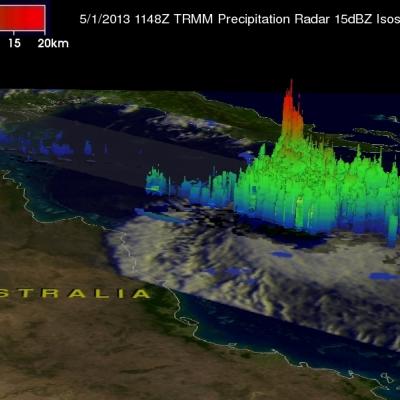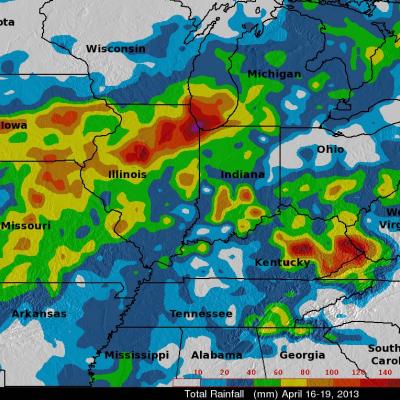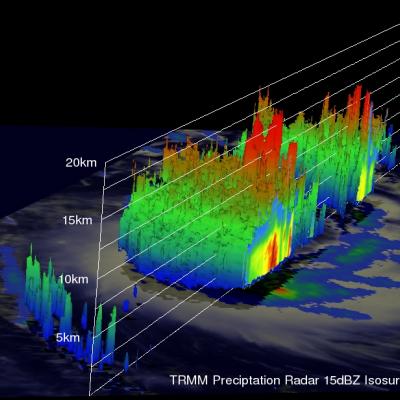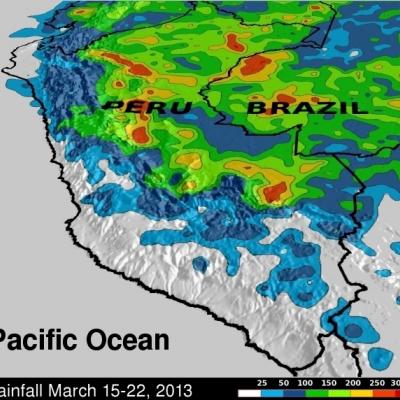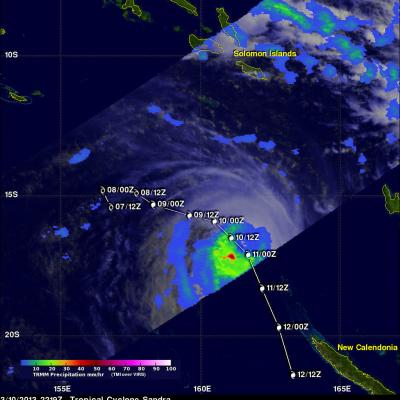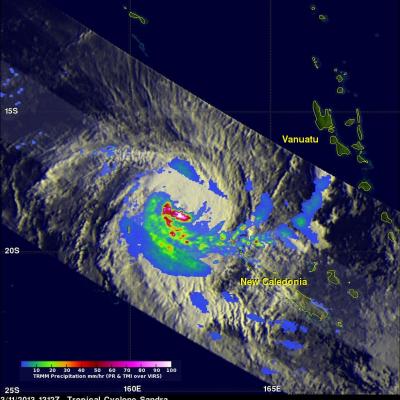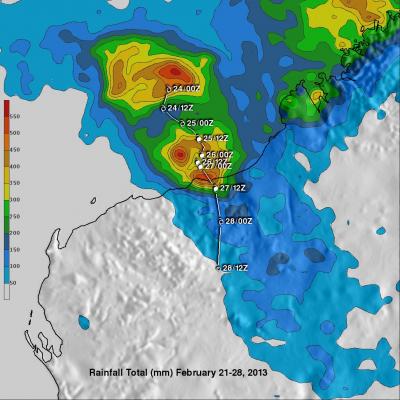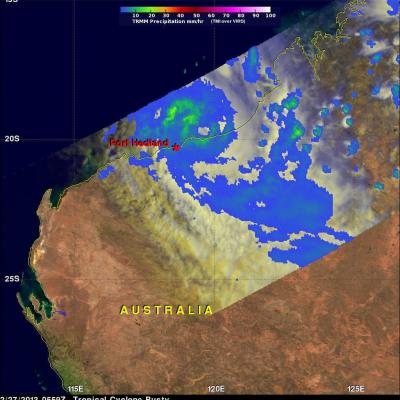Zane Heading Towards Queensland Australia
Cyclone Zane, which as of 12:00 UTC (10:00 pm Australian Eastern Standard Time or AEST) 1 May 2013, was located about 215 km (~133 miles) due east of the coast of Queensland, Australia. TRMM captured this recent image of Cyclone Zane at 11:48 UTC (9:48 pm AEST) 1 May 2013. At the time, the center of circulation was located about 215 km (~133 miles) due east of the coast of Queensland, Australia and was heading west-northwest. TRMM reveals that Zane is still not very well organized with no eye visible and very little evidence of banding (curvature) in the rain area. At the time of this image


